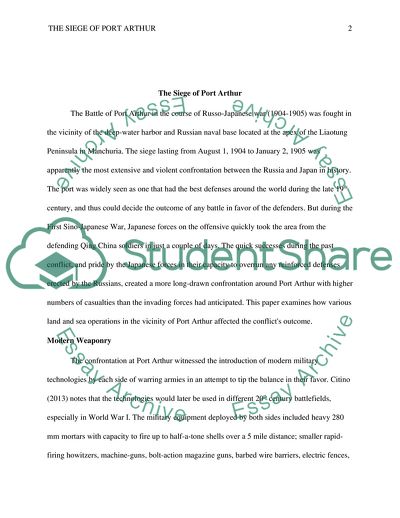Cite this document
(The Siege of Port Arthur Essay Example | Topics and Well Written Essays - 1750 words, n.d.)
The Siege of Port Arthur Essay Example | Topics and Well Written Essays - 1750 words. https://studentshare.org/history/1820641-how-did-land-and-sea-operations-in-the-vicinity-of-port-arthur-affect-the-conflicts-outcome
The Siege of Port Arthur Essay Example | Topics and Well Written Essays - 1750 words. https://studentshare.org/history/1820641-how-did-land-and-sea-operations-in-the-vicinity-of-port-arthur-affect-the-conflicts-outcome
(The Siege of Port Arthur Essay Example | Topics and Well Written Essays - 1750 Words)
The Siege of Port Arthur Essay Example | Topics and Well Written Essays - 1750 Words. https://studentshare.org/history/1820641-how-did-land-and-sea-operations-in-the-vicinity-of-port-arthur-affect-the-conflicts-outcome.
The Siege of Port Arthur Essay Example | Topics and Well Written Essays - 1750 Words. https://studentshare.org/history/1820641-how-did-land-and-sea-operations-in-the-vicinity-of-port-arthur-affect-the-conflicts-outcome.
“The Siege of Port Arthur Essay Example | Topics and Well Written Essays - 1750 Words”. https://studentshare.org/history/1820641-how-did-land-and-sea-operations-in-the-vicinity-of-port-arthur-affect-the-conflicts-outcome.


